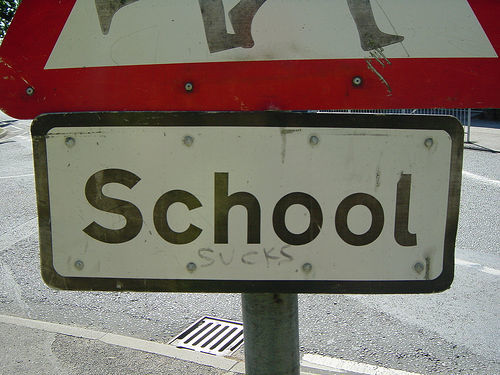Charter and private school advocates met recently to discuss research and anecdotal evidence on whether charter schools reduce school choice by siphoning off private school students.
“The reality is that charter schools are taking a good number of students from private schools,” said Joe McTighe, executive director of the Council for American Private Education (CAPE). In September, McTighe met with National Association of Public Charter Schools (NAPCS) President Nina Rees to discuss how to create a level playing field for all types of education opportunities, including vouchers and charters.
“We both want to ensure that families have access to a greater menu of schools that best suit the needs of our students,” Rees said.
Charter schools are public schools granted more autonomy in exchange for tighter accountability. Although both types of choice began in the 1990s, charters have grown more quickly than vouchers: 42 states allow charters, whereas 23 offer private school choice.
The Marketing Advantage of ‘Free’
Since 2000, charter school enrollment nationally has grown about 17 percent per year, on average. Now approximately 2 million students, or 4 percent of the school-age population, attend charter schools.
Charter students are typically drawn from nearby traditional public schools, but many leave private schools to attend new charters. In highly urban areas, students leaving a private school constitute nearly a third of new elementary-aged charter school enrollees, according to a study for the Cato Institute by Richard Buddin, a RAND Corporation economist.
“It makes no sense to let these [private] schools fade away,” McTighe said. “If charter schools put private schools out of business, we are diminishing choice, not increasing it.”
Specifically, about 183,000 charter students were drawn from private schools in 2011 alone. Charter schools charge no tuition because they are public schools, but private schools cannot do the same or even come close unless students have access to vouchers. This has caused some private schools to close, and some worry this could diminish competition and diversity in the education system, especially since private schools generally achieve better results than charters.
In the District of Columbia, for example, the DC Opportunity Scholarship Program boasts a 97 percent high school graduation rate, and 91 percent of these students enroll in college. The graduation rate for DC charter schools is 80 percent, and it’s 57 percent for traditional public schools.
In many places around the country, only one schooling option is available. Those calling for pluralism are worried legislation favoring charter schools can have a devastating impact on other opportunities within the private education market.
Shared Goals
CAPE and NAPCS met to discuss two realities: although charter schools are advancing choice and developing better school offerings within the public system, part of their success comes at the expense of private schools.
Both organizations want to increase the diverse, high-quality options available to students, their leaders said. Both also prefer legislation that would allow education funds to follow each child to his or her school of choice. This would create an equal playing field for all—charters, private schools, and traditional public schools.
“This could happen if the three sectors came together more often to talk about their challenges and goals and tried to leverage each other’s strengths and weaknesses,” Rees said.
Lawmakers could also enact voucher legislation in concert with charter legislation, like Indiana did in 2011, to reduce the anti-competitive effects of only allowing charter schools.
“Ideally,” Rees said, “every community would have robust district and chartered public schools and robust private schools that are all preparing students for the future.”
Read More
Buddin, Richard. The Impact of Charter Schools on Public and Private School Enrollments. August 28, 2012. CATO Institute. http://heartland.org/policy-documents/impact-charter-schools-public-and-private-school-enrollments-0.
Charter Schools Impact Private Schools. Council for American Private Education – Cape Outlook Number 317. September 2012. http://heartland.org/policy-documents/private-school-students-more-likely-succeed-college.
Parental Satisfaction & Program Summary. DC Opportunity Scholarship Program, 2012-2013. http://heartland.org/policy-documents/parental-satisfaction-program-summary-0.
What Do We Know About Vouchers and Charter Schools? Separating the Rhetoric from the Reality. The Rand Corporation. http://heartland.org/policy-documents/what-do-we-know-about-vouchers-and-charter-schools.
Image by Douglas Coulter.




